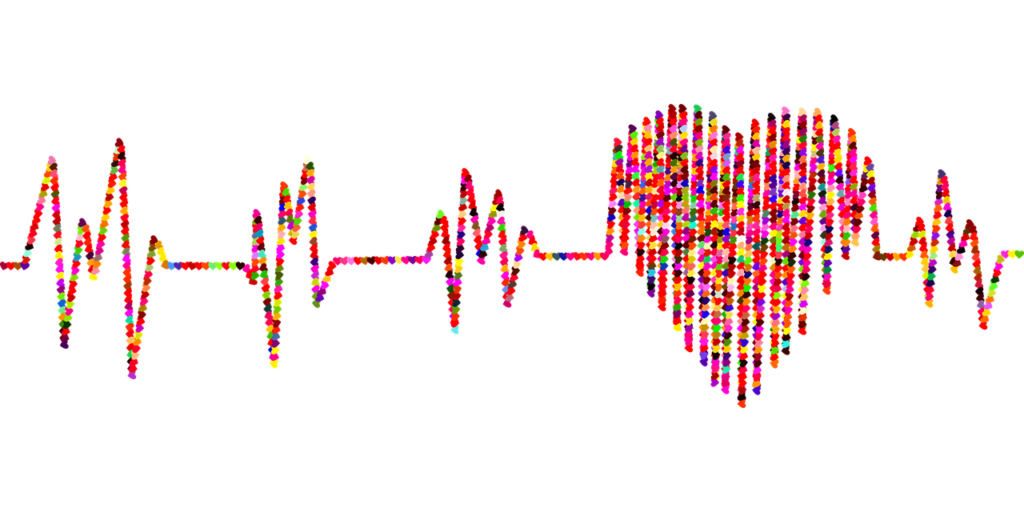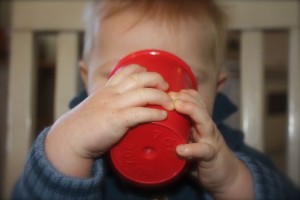
A five-year-old boy in the office last week said he planned to go home after his checkup and play “Elf on the Shelf.” In the game, he perches very still in a hiding spot in his house with one leg crossed and both hands on his knee, gazes into the distance, and waits for his sister to find him.
Yup, its that time of the year. Before you know it, a “real” Elf on the Shelf or perhaps a Mensch on a Bench may be visiting your home and you’ll be thinking about holiday gifts. Now that your families are another year older, we brought back our holiday gift idea list arranged by ages and developmental stages.
0-3 months: Babies this age have perfect hearing and enjoy looking at faces and objects with contrasting colors. Music, mobiles, and bright posters are some age appropriate gift ideas. Infants self sooth themselves through sucking- if you can figure out what your nephew’s favorite type of binkie is, wrap up a bunch-they are expensive and mysteriously disappear.
3-6 months: Babies start to reach and grab at objects. They enjoy things big enough to hold onto and safe enough to put in their mouths- try bright colored teething rings and large plastic “keys.” New cloth and vinyl books will likewise be appreciated; gnawed books don’t make great hand-me-downs.
6-12 months: Around six months, babies begin to sit alone or sit propped. Intellectually, they begin to understand “cause and effect.” Good choices of gifts include toys with large buttons that make things happen with light pressure. Toys which make sounds, play music, or cause Elmo to pop up will be a hit. For a nine-month-old old just starting to pull up to standing, a water or sand table will provide hours of entertainment in the upcoming year. Right now you can bring winter inside if you fill the water table with a mound of snow. Buy some inexpensive measuring cups and later in the summer your toddler will enjoy standing outside splashing in the water.
12-18 months: This is the age kids learn to stand and walk. They enjoy things they can push while walking such as shopping carts or plastic lawn mowers. Include gifts which promote joint attention. Joint attention is the kind of attention a child shares with you during moments of mutual discovery. Joint attention starts at two months of age when you smile at your baby and your baby smiles back. Later, around 18 months, if you point at a dog in a book, she will look at the dog then look back at you and smile. Your child not only shows interest in the same object, but she acknowledges that you are both interested. Joint attention is thought to be important for social and emotional growth.
18-24 months: Although kids this age cannot pedal yet, they enjoy riding on toys such as big wheels “Fred Flintstone” style. Dexterous enough to drink out of a cup and use a spoon and fork, toddlers can always use another place setting. Toddlers are also able to manipulate shape sorters and toys where they put a plastic ball into the top and the ball goes down a short maze/slide. They also love containers to collect things, dump out, then collect again.
Yes, older toddlers are also dexterous enough to swipe an ipad, but be aware, electronics can be a double edged sword— the same device which plays karaoke music for your daddy-toddler sing-along can be transformed into a substitute parent. The other day, a toddler was frighted of my stethoscope in the office. Instead of smiling and demonstrating to her toddler how a stethoscope does not hurt, the mother repeatedly tried to give her toddler her phone and told the child to watch a video. Fast forward a few years, and the mother will wonder why her kid fixates on her phone and does not look up at the family at the dinner table. Don’t train an addiction.
2-3 years: To encourage motor skills, offer tricycles, balls, bubbles, and boxes to crawl into and out of. Choose crayons over markers because crayons require a child to exert pressure and therefore develop hand strength. Dolls, cars, and sand boxes all foster imagination. Don’t forget those indestructible board books so kids can “read” to themselves. By now, the plastic squirting fish bath toys you bought your nephew when he was one are probably squirting out black specks of mold instead of water- get him a new set.
3-4 years: Now kids engage in elaborate imaginary play. They enjoy “dress up” clothes to create characters- super heroes, dancers, princesses, kings, queens, animals. They become adept at pedaling tricycles or even riding small training-wheeled bikes. Other gift ideas include crayons, paint, markers, Play-doh®, or side-walk chalk. Children this age understand rules and turn-taking and can be taught simple card games such as “go fish,” “war,” and “matching.” Three-year-olds recognize colors but can’t read- so they can finally play the classic board game Candyland®, and they can rote count in order to play the sequential numbers game Chutes and Ladders®.
5-year-olds: Since 5-year-olds can hop on one foot, games like Twister® will be fun. Kids this age start to understand time. In our world of digital clocks, get your nephew an analog clock with numbers and a minute hand… they are hard to come by. Five-year-olds also begin to understand charts— a calendar will also cause delight. They can also work jigsaw puzzles with somewhat large pieces.
8-year-olds: Kids at this point should be able to perform self help skills such as teeth brushing. Help them out with stocking stuffers such as toothbrushes with timers. They also start to understand the value of money. The kids will appreciate gifts such as a wallet or piggy bank. Eight-year-olds engage in rough and tumble play and can play outdoor games with rules. Think balls, balls, balls- soccer balls, kickballs, baseballs, tennis balls, footballs. Basic sports equipment of any sort will be a hit. Label makers will also appeal to this age group since they start to have a greater sense of ownership.
10-year-olds: Fine motor skills are quite developed and intricate arts and crafts such as weaving kits can be manipulated. Give a “cake making set” (no not the plastic oven with a light bulb) with tubes of frosting and cake mix to bake over the winter break. Buy two plastic recorders- one for you and one for your child to play duets. The instrument is simple enough for a ten year-year-old or a forty-year-old to learn on their own. Ten-year-olds value organization in their world and want to be more independent. Therefore, a watch makes a good gift at this age. And don’t forget about books: reading skills are more advanced at this age. They can read chapter books or books about subjects of interest to them. In particular, kids at this age love a good joke or riddle book.
Tweens: Your child now has a longer attention span (30-40 minutes) so building projects such as K’nex® models will be of interest to her. She can now also understand directions for performing magic tricks or making animal balloons. This is a time when group identity becomes more important. Sleepovers and scouting trips are common at this age so sleeping bags and camping tents make great gifts. Tweens value their privacy – consider a present of a journal with a lock or a doorbell for her room.
Teens: If you look at factors which build a teen into a resilient adult, you will see that adult involvement in a child’s life is important. http://www.search-institute.org/research/developmental-assets
We know parents who jokingly say they renamed their teens “Door 1” and “Door 2,” since they spend more time talking to their kid’s bedroom doors than their kids. Create opportunities for one-on-one interaction by giving gifts such as a day of shopping with her aunt, tickets to a show with her uncle, or two hours at the rock climbing gym with dad.
Encourage physical activity. Sports equipment is always pricey for a teen to purchase- give the fancy sports bag he’s been eying or give a gym membership. Many teens dislike sweating because they fear sweat will promote acne—treat them to moisture wicking shirts and elaborate acne regimes from the high-end department store make-up counter.
Enjoy your holiday shopping!
Naline Lai, MD and Julie Kardos, MD
©2013 Two Peds in a Pod®

 Resolve to raise self-esteem, foster a sense of security, and encourage independence in your children in the new year. Here are our top parenting ideas for this year:
Resolve to raise self-esteem, foster a sense of security, and encourage independence in your children in the new year. Here are our top parenting ideas for this year:
 We love being pediatricians because it’s an honor to be a part of your family, it’s intellectually challenging, and it gives us a chance to teach. But mostly, we love to make people feel better.
We love being pediatricians because it’s an honor to be a part of your family, it’s intellectually challenging, and it gives us a chance to teach. But mostly, we love to make people feel better.


 Ah Ha! Little did we know when we wrote this post back in 2010 that
Ah Ha! Little did we know when we wrote this post back in 2010 that  Got a baby starting on table foods and out of ideas? You don’t have to go broke over buying toddler Puffs®.
Got a baby starting on table foods and out of ideas? You don’t have to go broke over buying toddler Puffs®.  We’ve heard some interesting things about cow’s milk over the years. I am going to share with you four myths about milk that I continue to hear from my patients’ parents. Spoiler: reading myth #4 can save you lots of money.
We’ve heard some interesting things about cow’s milk over the years. I am going to share with you four myths about milk that I continue to hear from my patients’ parents. Spoiler: reading myth #4 can save you lots of money. Pediatricians associate Back to School with “Time to get your flu vaccine.” At least this pediatrician mom does. As I try to figure out when I can get my own three children over to my office to get their flu vaccines, we want to give you a flu vaccine update.
Pediatricians associate Back to School with “Time to get your flu vaccine.” At least this pediatrician mom does. As I try to figure out when I can get my own three children over to my office to get their flu vaccines, we want to give you a flu vaccine update.